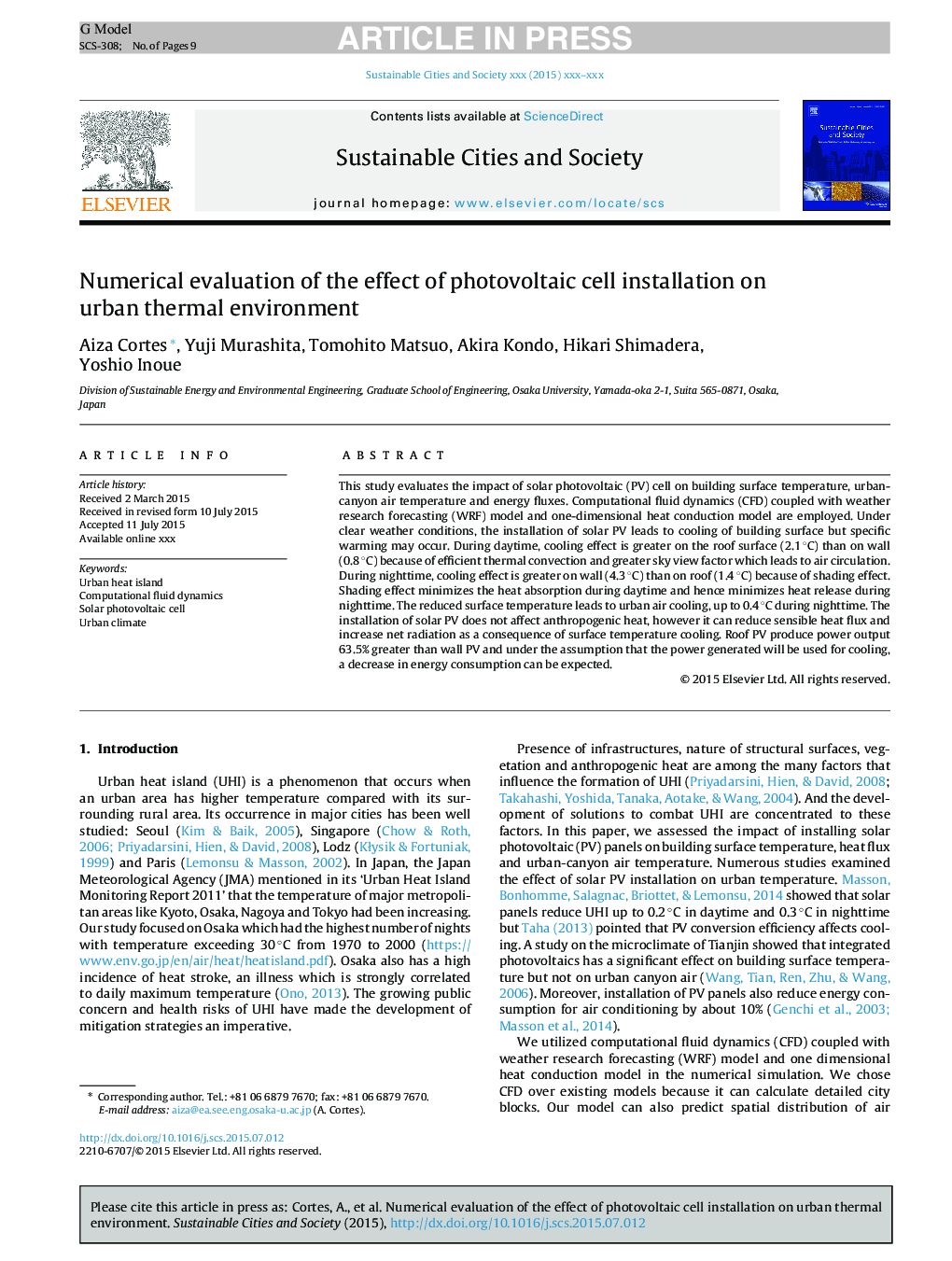| Article ID | Journal | Published Year | Pages | File Type |
|---|---|---|---|---|
| 6775947 | Sustainable Cities and Society | 2015 | 9 Pages |
Abstract
This study evaluates the impact of solar photovoltaic (PV) cell on building surface temperature, urban-canyon air temperature and energy fluxes. Computational fluid dynamics (CFD) coupled with weather research forecasting (WRF) model and one-dimensional heat conduction model are employed. Under clear weather conditions, the installation of solar PV leads to cooling of building surface but specific warming may occur. During daytime, cooling effect is greater on the roof surface (2.1 °C) than on wall (0.8 °C) because of efficient thermal convection and greater sky view factor which leads to air circulation. During nighttime, cooling effect is greater on wall (4.3 °C) than on roof (1.4 °C) because of shading effect. Shading effect minimizes the heat absorption during daytime and hence minimizes heat release during nighttime. The reduced surface temperature leads to urban air cooling, up to 0.4 °C during nighttime. The installation of solar PV does not affect anthropogenic heat, however it can reduce sensible heat flux and increase net radiation as a consequence of surface temperature cooling. Roof PV produce power output 63.5% greater than wall PV and under the assumption that the power generated will be used for cooling, a decrease in energy consumption can be expected.
Related Topics
Physical Sciences and Engineering
Energy
Renewable Energy, Sustainability and the Environment
Authors
Aiza Cortes, Yuji Murashita, Tomohito Matsuo, Akira Kondo, Hikari Shimadera, Yoshio Inoue,
